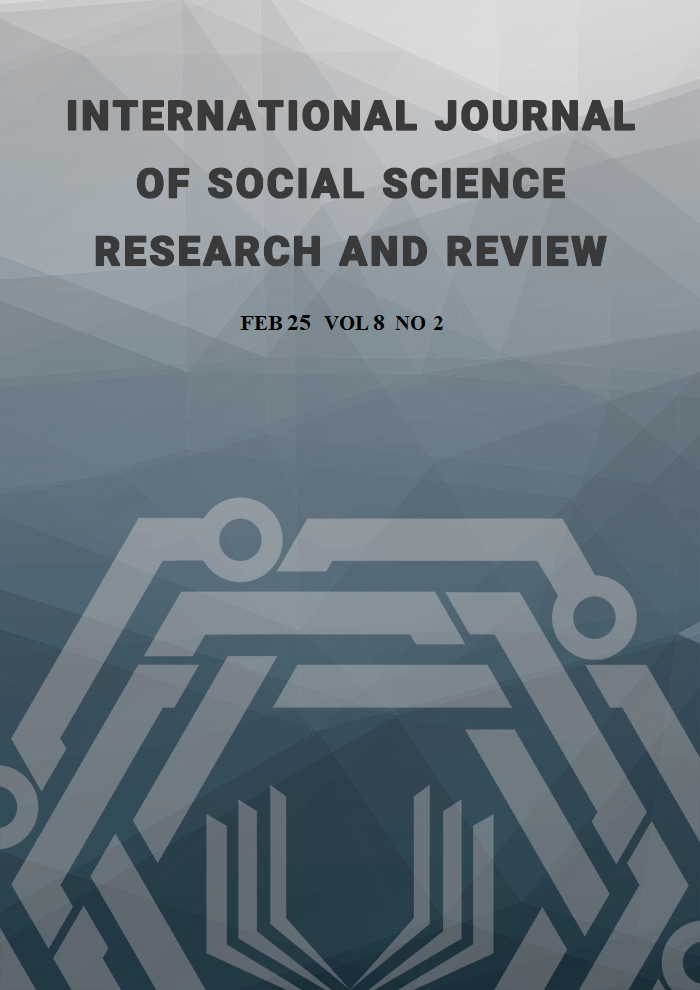Knowledge and Awareness of Rape Myths among the People of Gusau Town in Zamfara State, Nigeria: A Medical Sociology Perspectives
Abstract
This research work is aimed at the study of the knowledge and awareness of rape myths among the people of Gusau town in Zamfara State Nigeria. The specific objectives of the study are to find out the knowledge and awareness of the people of Gusau town on female rape myths; to discover the extent of knowledge and awareness of the people of Gusau town on male rape myths; examine the knowledge and awareness of the people of Gusau town on alcohol and substance rape myths; to know the knowledge and awareness of the people of Gusau town on dating rape myths; and to suggest ways through which rape myths are confront and tackle. The study used the quantitative method of research for data collection. The quantitative data was collected using questionnaire as research instrument. Among the 300 questionnaires distributed 279 was return. Finding from this study demonstrate the level of acceptance of rape myths. Additionally, this study recommends that since rape myth can harmfully affect the victims of sexual violence, contributing to increased shame through aspects such as victim-blaming it is better to provide a strong knowledge and awareness among the general public about holding and believing of such rape myth.
References
Ackard, D. M., & Neumark-Sztainer, D. (2002). Date violence and date rape among adolescents: Associations with disordered eating behaviors and psychological health. Child Abuse & Neglect, 26(5), 455–473. doi:10.1016/S0145- 2134(02)00322-8.
Larimer, M., Lydum, A. R., Anderson, B. K., & Turner, A. P. (1999). Male and female recipients of unwanted sexual contact in a college student sample: Prevalence rates, alcohol use, and depression symptoms. Sex Roles, 40, 295–308. doi:10.1023/A:1018807223378.
Lee, R. & Jordan, J. (2014). Sexual assault. In L. Jackson-Cherry & B. Erford (Eds.), Crisis assessment, intervention, and prevention (2nd ed.), pp. 193–217. Boston, MA: Pearson.
Maigemu, A. Y., & Haji Hassan, K. (2016). Relationship between household behaviour and malaria prevalence in Zamfara state Nigeria: A qualitative study. International Journal of Public Health and Clinical Sciences, 3(1), 2289–7577.
Maigemu, A. Y., & Haji Hassan, K. (2015). Malaria as a cause of morbidity and mortality: A socio- economic overview. Research on Humanities and Social Sciences (Online), 5(8), 2225–484.
Maigemu, A. Y., & Haji Hassan, K. (2221). The role of poverty and household economic conditions to the treatment of malaria in Zamfara state North West Nigeria. Journal of Social and Development Sciences, 6(2), 30–36.
Maigemu, A. Y., & Haji Hassan, K. (2015). Influence of religion on malaria control practices among household heads in Zamfara state North West Nigeria. Journal of Culture, Society and Development 10, 78-84. Retrieved from www.iiste.org.
Maigemu, A. Y., & Haji Hassan, K. (2015). Influence of household behaviour on malaria control in Zamfara state North West Nigeria: A pilot study for instruments validation. Mediterranean Journal of Social Sciences,6(3 S2), 183.
Maigemu, A. Y., & Haji Hassan, K. (2015). A Conceptual Overview of the Effect of Household Behaviour on Malaria Control and Prevention. Proceedings of USM International Conference on Social Sciences 2015. 174-178 eISBN 978-967- 11473-3-7.
Maigemu, A. Y., & Haji Hassan, K. (2015). Household Behaviour as Caused of Malaria Prevalence: A Qualitative Study in Zamfara State North West Nigeria. E-proceedings of the International Conference on Social Science Research, ICSSR. 230-239 e-ISBN 978-967-0792-04-0.
National Population Commission (NPC) [Nigeria] & ICF Macro (2004).Nigeria Demographic and Health Survey. Abuja: National Population Commission and ICT Macro.
Perilloux, C., Duntley, J. D., & Buss, D. M. (2012). The costs of rape. Archives of Sexual Behavior, 41(5), 1099–1106. doi:10.1007/s10508-011-9863-9.
Ullman, S. E., Relyea, M., Peter-Hagene, L., & Vasquez A. L. (2013). Trauma histories, substance use coping, PTSD, and problem substance use among sexual assault victims. Addictive Behaviors, 38(6), 2219–2223. doi:10.1016/j.addbeh. 2013.01.027.
Walker, J., Archer, J., & Davies, M. (2005). Effects of rape on men: A descriptive analysis. Archives of Sexual Behavior, 34(1), 69–80. doi:10.1007/s10508-005-1001-0.
Zamfara Agricultural Development Project (ZADP), (2008).
Copyright (c) 2025 Ahmad Yahaya Maigemu, Rufai Sani Adamu

This work is licensed under a Creative Commons Attribution-NonCommercial-NoDerivatives 4.0 International License.
Copyright for this article is retained by the author(s), with first publication rights granted to the journal. This is an open-access article distributed under the terms and conditions of the Creative Commons Attribution license (https://creativecommons.org/licenses/by-nc-nd/4.0/).





